Routes
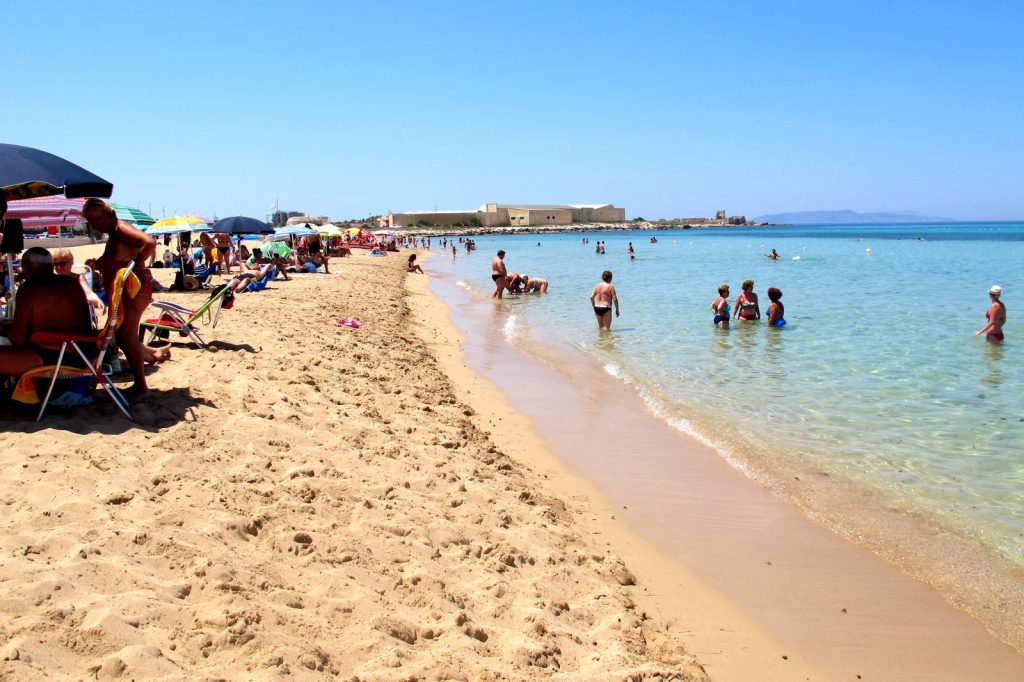
Beaches
The bathing season in the Trapani area begins in May and lasts until September – October.
The beautiful climate, typically Mediterranean, welcomes tourists and visitors along its entire coastline.
From the small beach of San Liberale near the Ligny Tower, to the beach of San Giuliano, with its bathing beaches, to the splendid coves that line the entire coast that leads to Makari, San Vito Lo Capo and the Zingaro Reserve.
La Processione dei Misteri (Good Friday procession)
It is repeated every year and there is great expectation in Trapani for Good Friday. The procession of the Mysteries is staged, one of the most secular processions depicting the passion and death of Christ, whose protagonists are the 18 sculptural groups plus 2 simulacra, made of wood, canvas and glue between the seventeenth and eighteenth centuries by master craftsmen The Good Friday procession lasts for about 24 hours through the streets of the city, accompanied by the characteristic funeral marches sung by the bands.
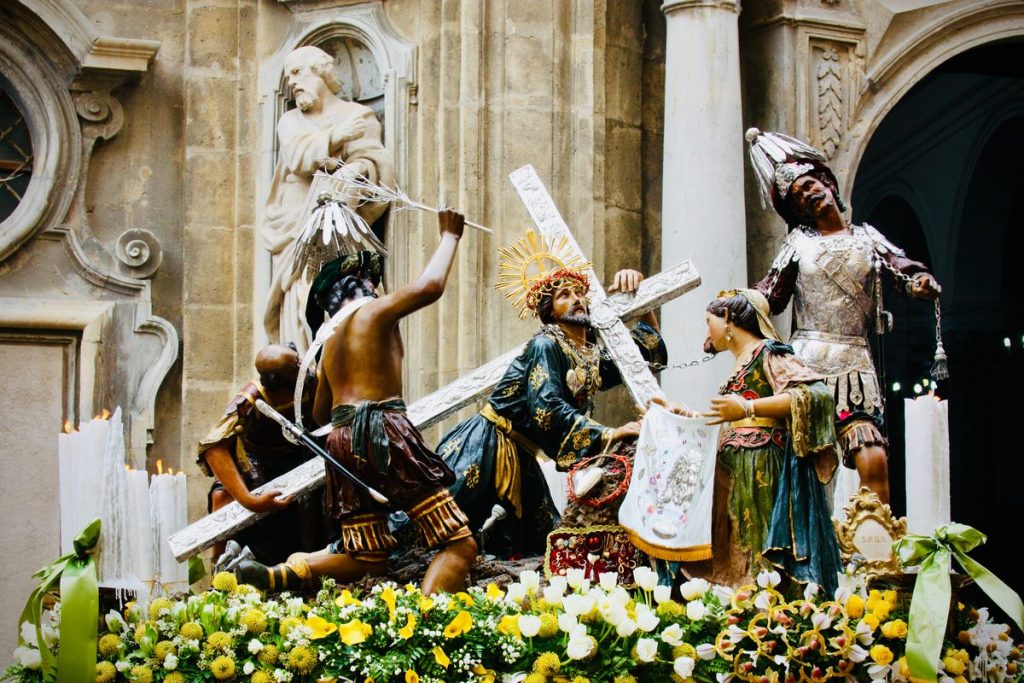
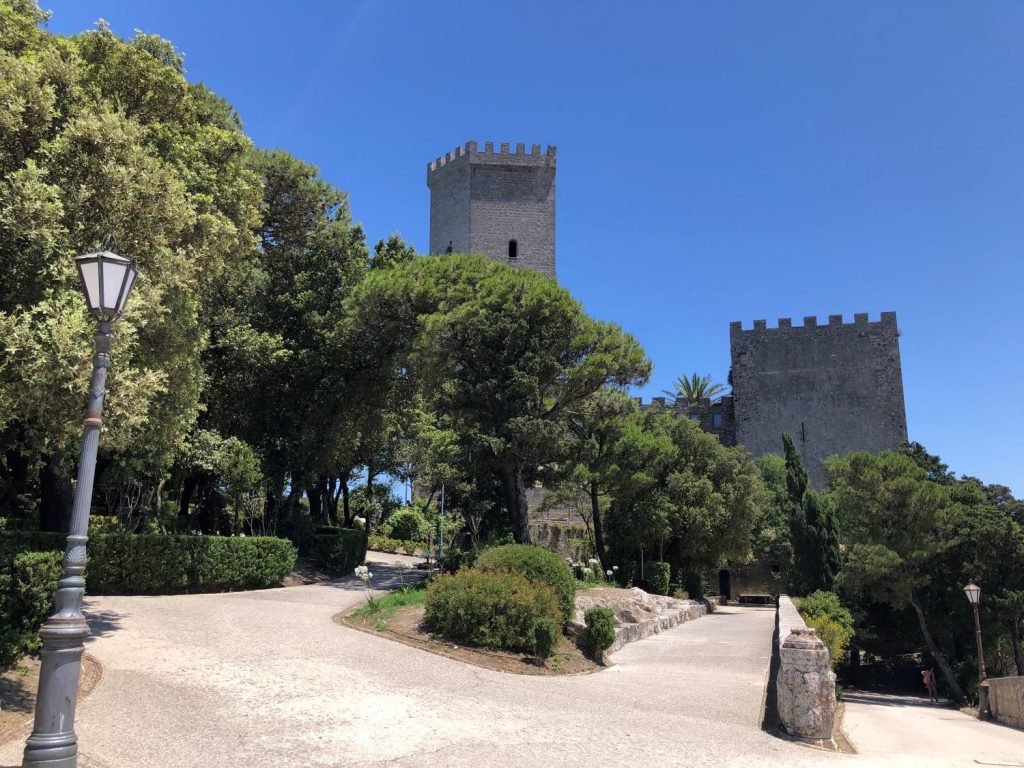
Erice
Ancient medieval village overlooking the city of Trapani, a wonderful terrace overlooking the sea with an equally wonderful background with the salt pans and the Egadi islands that frame one of the most beautiful villages in Italy.
What distinguishes it are certainly the cyclopean walls of the Punic Phoenician Elymian period, the Norman castle of the XII-XIII century built on the remains of the Roman temple of Venus from which it takes its name and the castle and the towers of the balio (medieval).
Egadi islands
A few miles from Trapani the three jewels of the Egadi archipelago: Favignana, Levanzo and Marettimo, three islands of unparalleled beauty. An expanse of pristine waters, with Caribbean colors that preserve a multiple and colorful marine flora and fauna thanks to which the Marine Protected Area, the largest in Europe, was established.
Islands rich in colors, scents but also in traditions. Favignana famous for its traps, for the production and conservation of tuna. Levanzo, very famous for the Grotta del Genovese, dating back to the neo-paleolithic age and known for its graffiti and wall paintings. Marettimo, a popular destination for excursions and diving in its fascinating caves.
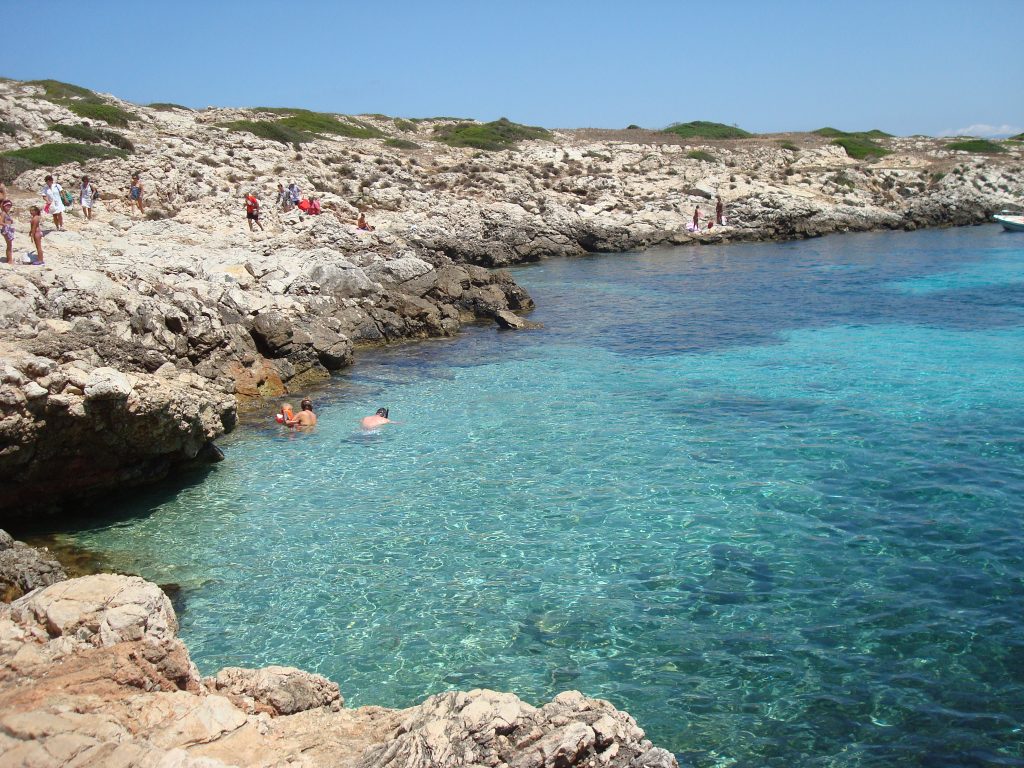
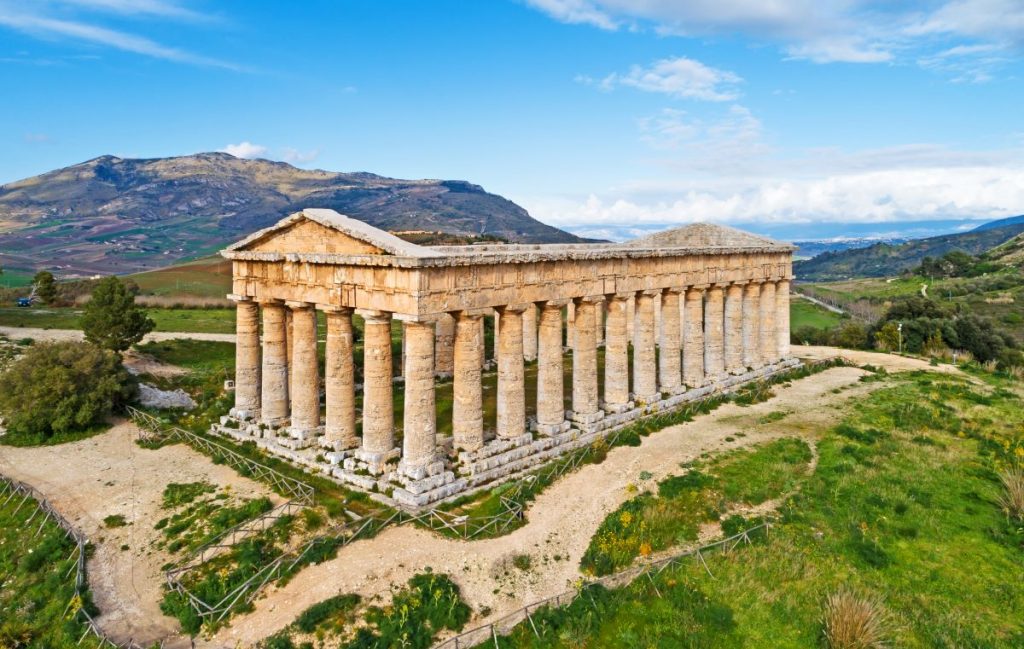
Segesta
The ancient city of Segesta was founded by the Elimi in the 5th century BC. C.
The old city stands on Monte Barbaro, where recent excavations conducted by the Superintendency and the Scuola Normale Superiore of Pisa have brought to light important findings.
Segesta is about 30 kilometers from Trapani and about 15 kilometers from Alcamo and Castellammare del Golfo.
Of particular beauty are the Doric-style Temple and the Theater where, in the summer months, classical performances and national events take place.
Selinunte
Selinunte was founded in 650 BC. from Diodorus Siculus, is located at the mouth of the river where the wild parsley (selinon) that gave its name to the watercourse and the city still grows.
The Greek urban system ranks at the highest levels in the history of urban planning. The incredible number and quality of the Doric style temples is a purely Selinuntine peculiarity.
The Selinunte Archaeological Park, with an extension of about 270 hectares, is the largest Archaeological Park in Europe.
The sculptures found in the excavations of Selinunte are found mainly in the National Archaeological Museum of Palermo, while the most famous work, the Ephebe of Selinunte is exhibited at the Civic Museum of Castelvetrano.
The park is accessed through two entrances. The first is located in the hamlet of Marinella di Selinunte. The second, instead, is located in the Borgo di Triscina hamlet.
About 11 kilometers from Selinunte are the Cave di Cusa, a rocky bank of limestone, which was used for Selinunte constructions and Doric columns.
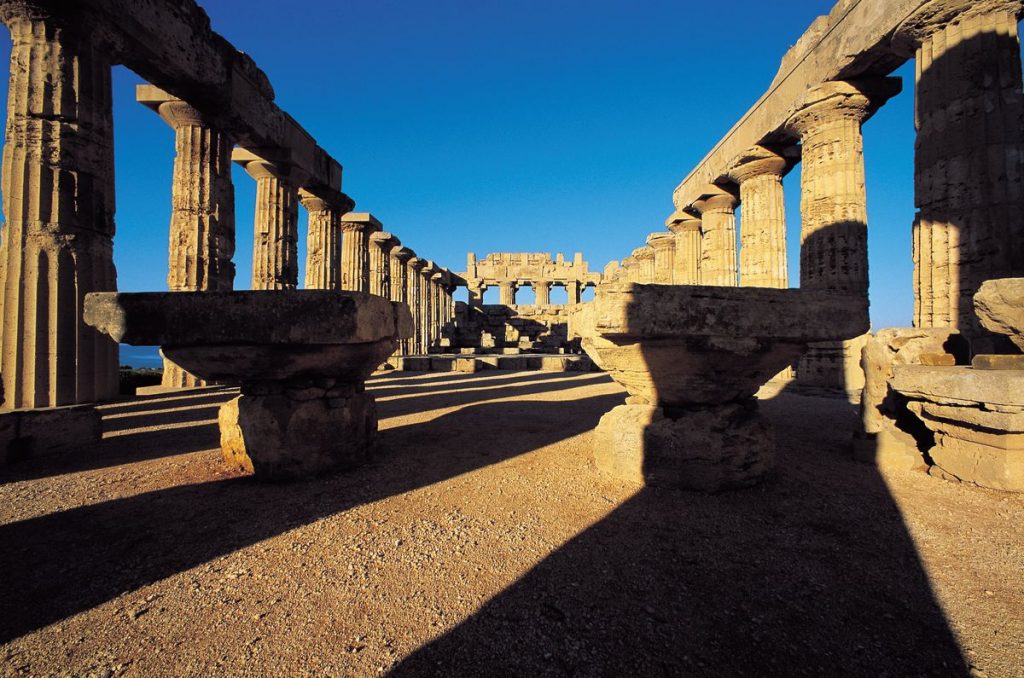
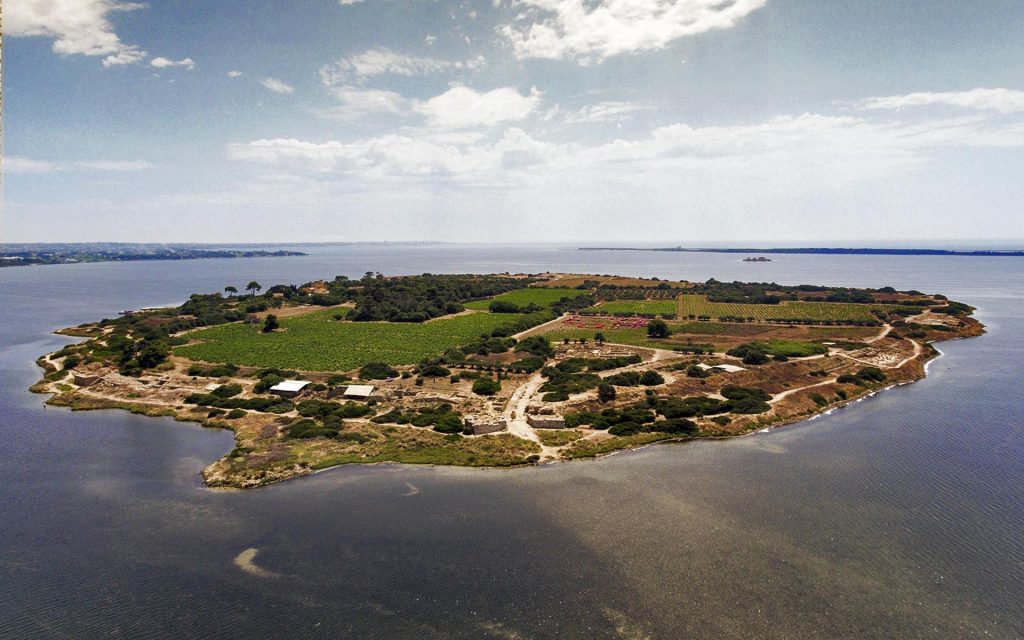
Mozia
The Island of Mozia is one of the main archaeological sites in the Mediterranean, which falls within the “Via del Sale”, which connects Trapani to Marsala.
On the island there are numerous archaeological values, buildings and monuments dating back to the eighth century BC. until the third century BC.
Furthermore, next to the extraordinary historical – archaeological and cultural importance, it is of considerable environmental and landscape importance, being inserted in the heart of the “Oriented Natural Reserve of the Stagnone Islands” and this perfect balance between culture and nature places it at the top of tourist interest. international.
The site is characterized by different characterizations that it is difficult to find all together in other territorial areas, which contribute to giving it a unique character.
In the island museum you can admire the Giovinetto di Mozia, exhibited in Venice on the occasion of the exhibition on the Phoenicians, in London, on the occasion of the Olympics and at the Getty Museum in Los Angeles.
San Vito Lo Capo
It is located on the west coast of Sicily, on the peninsula of the same name which ends with Capo San Vito, with the Gulf of Macari to the west and the Zingaro Reserve and the Gulf of Castellammare to the east. There is a three kilometer long golden sandy beach. In addition to the sea and the crystal clear beach, San Vito Lo Capo is very famous for the Cous Cous Fest which takes place every year at the end of September, attracting thousands of tourists.
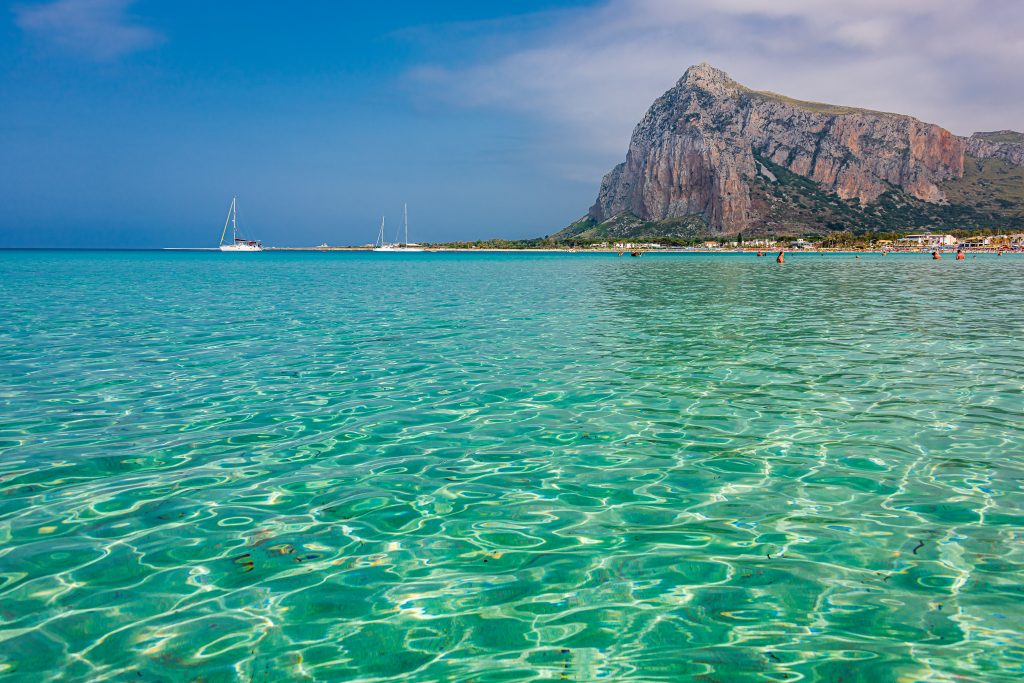
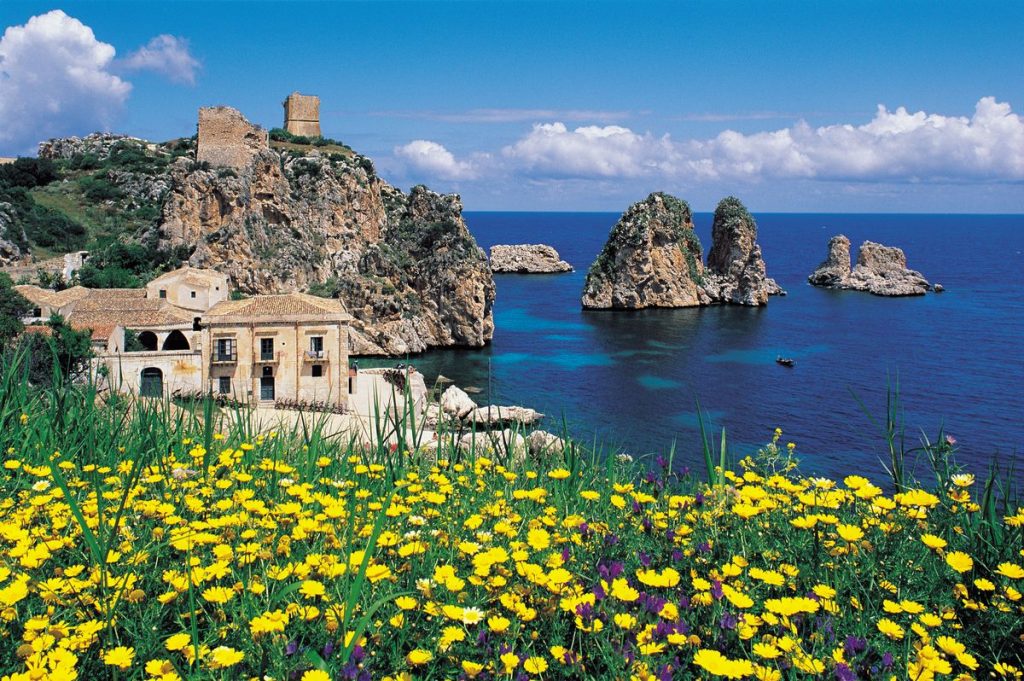
Scopello
Scopello, from the Greek Scopelos, (rocks), takes its name from the two beautiful stacks that emerge from the crystal clear waters of the bay, where there is one of the oldest and most important tuna traps in Sicily, existing for about eight centuries.
The history of this village is very ancient. The first finds that attest to the presence of man in these lands were found in the Uzzo cave, in the Zingaro Reserve, which can be accessed directly from Scopello.
The small village, perched on the sea, develops around a beautiful 17th century beam and an ancient drinking trough. Here, the tourist, through its narrow alleys, is immersed in the colors of an uncontaminated nature and the typical Mediterranean scents. From the village, you can admire a spectacular view of the famous Faraglioni, the tonnara and the imposing Gulf of Castellammare.
Castellammare del Golfo
Described by historians and geographers of antiquity, such as Ptolemy, Diodorus Siculus and Strabone, Castellammare del Golfo was born as an emporium of Segesta, a city with which it shared history until its fall.
The Arabs occupied it starting from 827 AD, giving it the name Al Madarig, or “The Steps” who built the first nucleus of the Castle, built in the 10th century on the ruins of pre-existing buildings and subsequently enlarged by the Normans. The building stood on a rocky spur close to the sea, connected to the mainland by a wooden drawbridge, replaced with the masonry bridge that still gives access to the castle today. Today the castle houses the museum complex “The Memory of the Mediterranean”.
Not far away there are sites of particular interest such as the trap of Scopello, the archaeological park of Segesta, the Zingaro reserve and the Terme Segestane, where the sulphurous water, at a temperature of about 44 ° C, feeds two thermal pools and the Grotta Regina, a natural sauna from the Roman era.
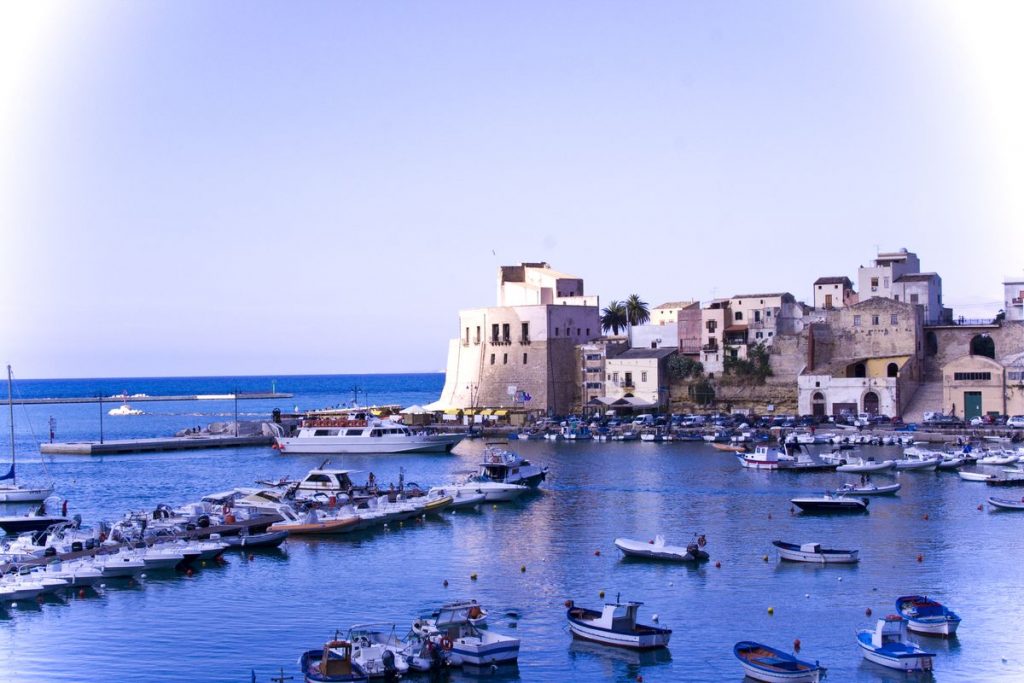
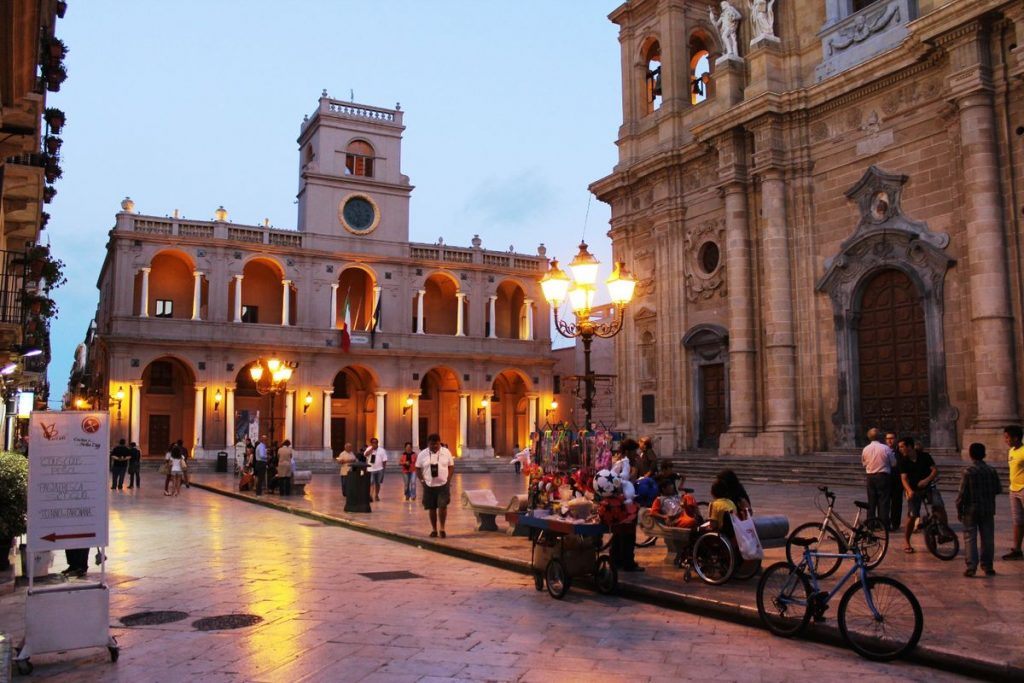
Marsala
The city stands on the site of the ancient Lilibeo, built by the Carthaginians after Mozia was destroyed by Dionysius I in 397 BC. C ..
The present name was attributed by the Arabs, who called it Marsa-Allah (port of God).
Among the places to visit, the elegant Piazza della Repubblica, the heart of the city, which overlooks the town hall and the majestic Mother Church dedicated to St. Thomas of Canterbury, the Flemish Tapestry Museum, where a series of 8 tapestries is exhibited del XVI and the Antico Mercato: fish market during the day, while in the evening it comes alive with nightlife through numerous cafes where you can listen to music, drink and eat until late.
Very interesting is the visit to the Baglio Anselmi, an ancient wine factory, today the Regional Archaeological Museum, where the wreck of the Punic ship and numerous archaeological finds are exhibited.
A guided tour of the wine cellars, full of history and charm, is a must, where you can taste the famous Marsala wine in its various types with combinations of typical dishes.
Mazara del Vallo
The Phoenicians made Mazara an important mercantile emporium between the 6th and 5th centuries. B.C. baptizing it with the name Mazar, or the “fortress”.
Subsequently conquered by the Carthaginians and later by the Romans. In the Middle Ages it was occupied by the Arabs (827), who made it the center of a vast administrative district (Val di Mazara); the Normans erected it as a bishopric, transferring the seat from Lilibeo.
The urban center still retains the characteristic urban development of Arab derivation, in which the Casbah is located with its intricate maze of narrow streets.
Piazza della Repubblica where the Seminary of the Clerics is located, the Bishop’s Palace and the Cathedral, inside which you can admire the marble complex of six statues by Antonino Gaggini.
Of extraordinary interest is the statue of the Dancing Satyr, a splendid bronze statue dating back to the Hellenistic period, datable to the end of the 4th century BC. C. and attributable to the school of the great artist Praxiteles. Recovered from the depths of the Sicilian Channel at a depth of about 500 meters, currently exhibited in the museum of the same name in Piazza Plebiscito.
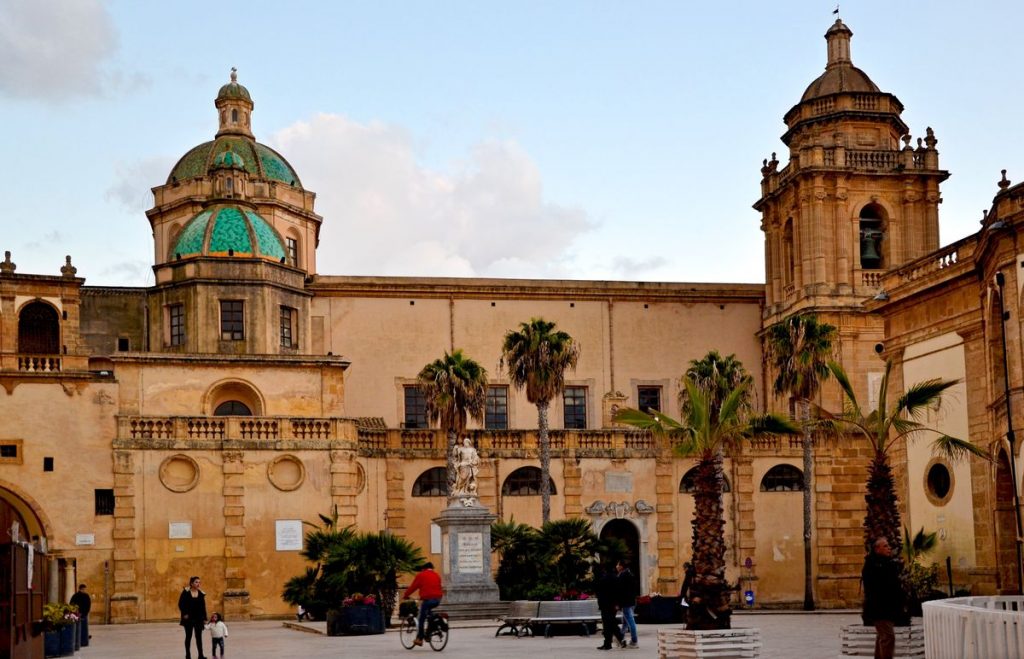
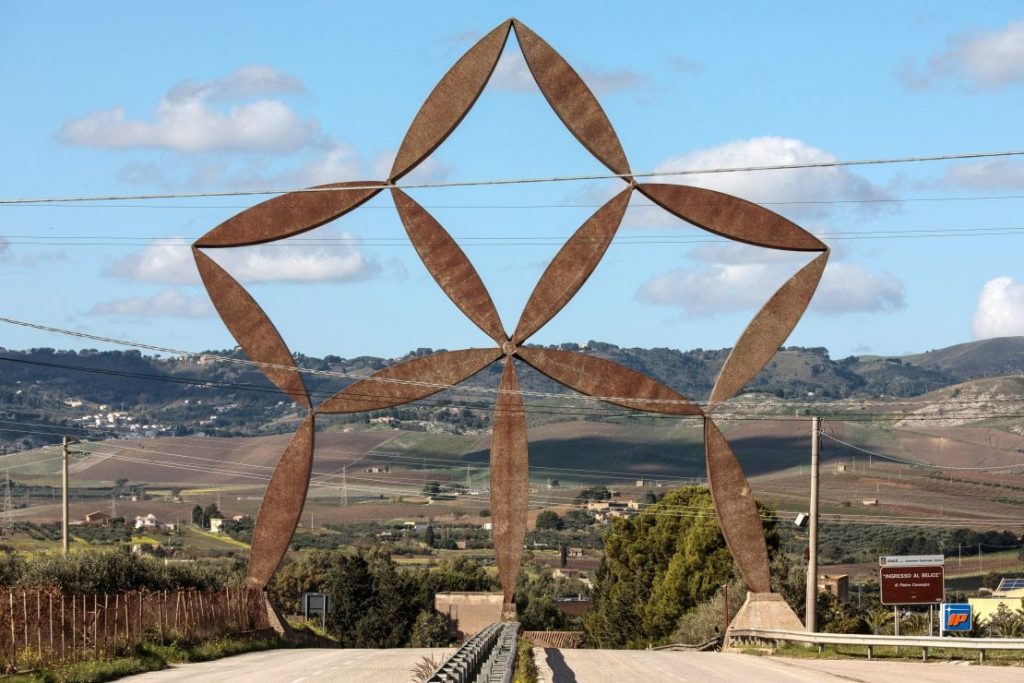
Gibellina
The current town of Gibellina Nuova was built from scratch after the 1968 earthquake and is about 11 km from the previous old town destroyed by the earthquake.
For the reconstruction of the town, the former mayor of the town Ludovico Corrao had the enlightened idea of calling several world-famous artists to Gibellina.
The city immediately became an immense laboratory of experimentation and artistic planning, in which artists and valuable works renewed the urban space according to an innovative perspective.
Today Gibellina Nuova, in whose urban fabric there are over fifty works of art, including sculptures and installations, is considered the largest open-air museum in Italy.
On the ruins of the old town, Alberto Burri created the Cretto, a land art work that retraces the streets and alleys of the old city. The Cretto, covering 80,000 square meters, is one of the largest contemporary works of art in the world
The Natural Reserves
The province of trapani is characterized by the presence of as many as 10 terrestrial nature reserves (the Saline di Trapani and Paceco reserve, the Stagnone islands reserve, the Zingaro reserve, the Monte Cofano reserve, the Capo Feto reserve, the Preola lake and Gorghi Tondi, the Foce del Belice reserve, the Santa Ninfa caves reserve, the Bosco d’Alcamo reserve and the Pantelleria island reserve), and the marine reserve of the Egadi Islands.
Worth mentioning for their particular importance:

The Oriented Natural Reserve of the Saline of Trapani and Paceco
Managed by the WWF, it is located in the “Via del Sale”.
Its territory is one of the most important naturalistic heritages of Sicily; here coexists the myth and a thousand-year history, which documents a human settlement, starting from the first millennium BC, when the Phoenicians, who were the first in this area to devote themselves to the cultivation of salt, created that indispensable product for human nutrition .
Even in recent times, man has contributed to creating an anthropic landscape that enhances the environment through the construction of windmills, salt pans, piles of salt and that complex network of tanks and canals, which creates an immense natural chessboard and the isolated “bagli”, extraordinary examples of rural architecture.
You can admire several species of birds, including the pink flamingo.
The Reserve of the Stagnone Islands
The reserve takes its name from the “Stagnone”, a lagoon bordered by the open sea by the Isola Grande, with three islets in its interior, Mozia, Santa Maria and Schola.
It is the largest lagoon in Sicily and has an environment of enormous naturalistic interest and great scenic beauty.
In this stretch of sea, the reserve presents itself to visitors as an almost surreal landscape, offering all its splendor: the sea, the green islets, the reeds, the windmills, the white salt dunes, and the spectacular sunsets that paint the sky with the colors of purple, gold, blue.
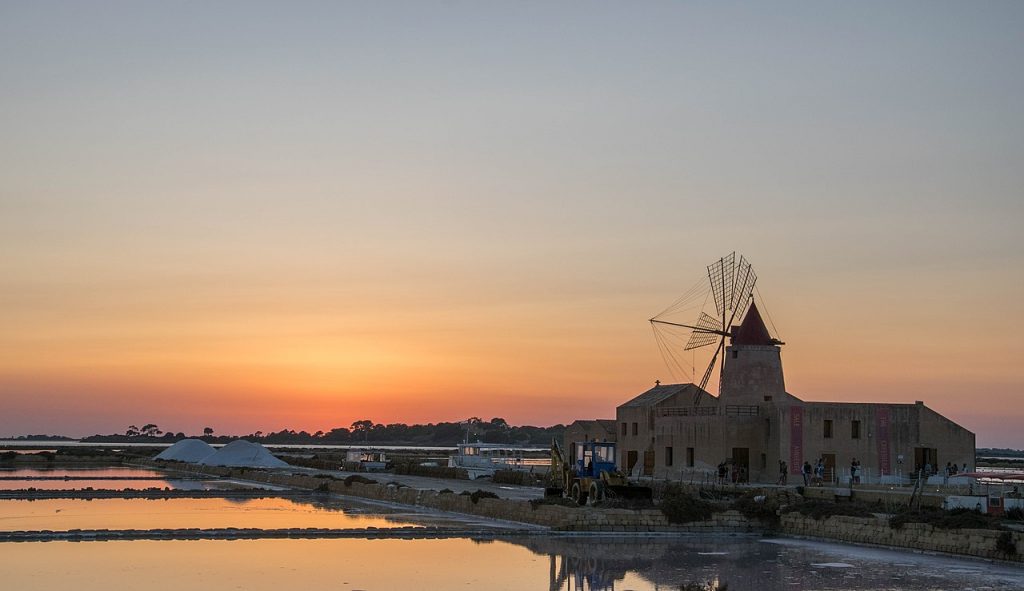

The Zingaro Reserve
The Riserva dello Zingaro is one of the most original and uncontaminated environments that characterize the most “Sicilian” habitat in Sicily, consisting of a varied set of lush valleys, low hills and rugged and wild landscapes.
The limestone massifs that overlook it form the backdrop to a series of beautiful gulfs characterized by a coastal strip marked by low cliffs and deep stretches of fine sand that lap a limpid and uncontaminated sea.
The plant landscape, the rare and varied endemic flora and the sedentary and migratory fauna make this reserve one of the most important biotypes in Sicily; a unicum that constitutes an ecological niche that must be preserved and enhanced.
The marine reserve of the Egadi Islands
The Protected Marine Area of the Egadi Islands is the largest marine reserve in Europe.
This extraordinary marine area has a valuable habitat of considerable interest for its biodiversity.
In the seabed there is the protected habitat of the largest and best preserved Posidonia oceanica prairie in the Mediterranean, which represents, like an immense underwater forest, the green lung of our seas as it plays a crucial role in the balance of the marine ecosystem. .
In addition to producing oxygen and absorbing CO2, it is an ideal habitat for the reproduction of numerous fish species.
Among the protected animal species present on the Egadi islands, the presence of the very rare Monk Seal and the Caretta Caretta sea turtle has been ascertained since 2011.
The Marine Protected Area is divided into four zones (A, B, C and D) at different levels of protection and with different access possibilities and usability limitations.
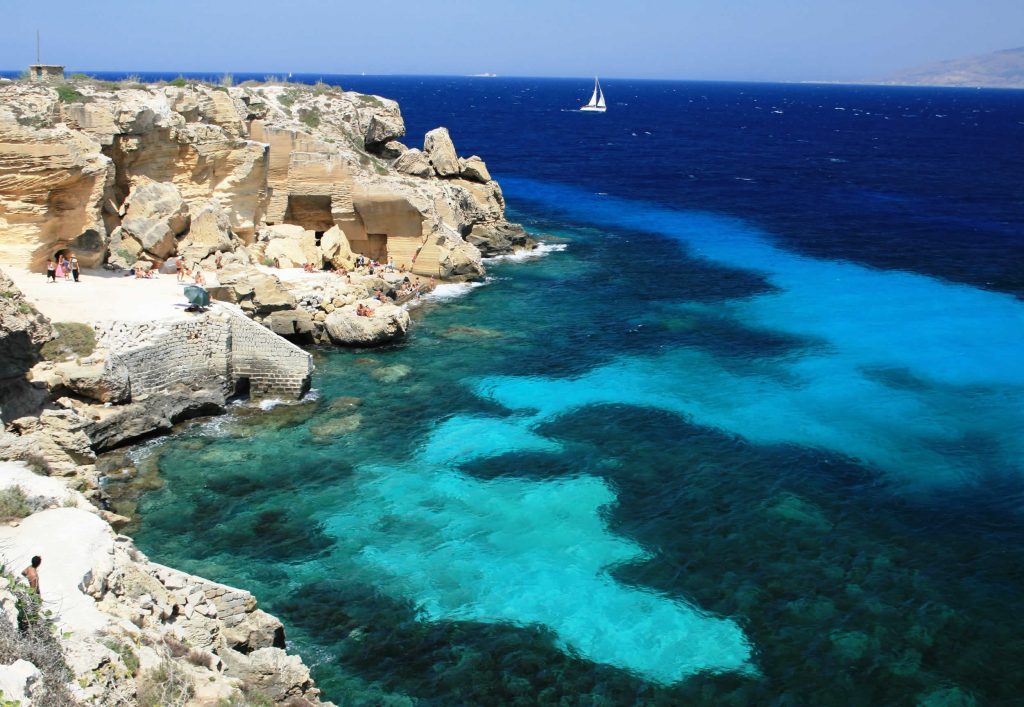
FOOD AND WINE PRODUCTS
Trapani cuisine is famous for the variety of its dishes.
Here, the “contamination” of peoples and cultures has allowed the creation of typical recipes that are impossible to taste in other parts of Italy.
Among the typical products, fish dominates most of the dishes of the Trapani cuisine. Based on fish you can taste, in the various restaurants and typical trattorias, both appetizers and first and second courses.
The particularly favorable climate and the flavor of the sea help to provide the products of the land and fish with a particularly appreciated taste and an absolute variety of ingredients, which allow the creation of very appetizing dishes.
The two main dishes of Trapani cuisine are fish couscous and “busiate cu ‘l’agghia” or Trapani pesto.
Among the typical products the following should be mentioned:
Fresh tuna and tuna products (tuna bottarga, tuna bresaola, smoked red tuna and tuna salami), arancine of various flavors, aubergine caponata, “pane cunzatu”, delicious cheeses , including the “Vastedda del Belice and many others.
The ingredients that are used in the kitchen range from Nubian red garlic, Pantelleria capers, salt and oil, to desserts, mainly made with ricotta (cannoli and Sicilian cassata) and almond paste. But good food must always be paired with good wine.
In the Trapani area there is the largest wine growing on the island. The vines grown are Grillo, Cattarratto, Damaschino, Trebbiano, Inzolia, Cabernet Sauvignon, Nerello Mascalese, Frappato, Merlot and Zibibbo
Here excellent wines with Controlled Designation of Origin are produced: Alcamo Doc, Erice Doc, Salaparuta Doc and the famous Marsala.